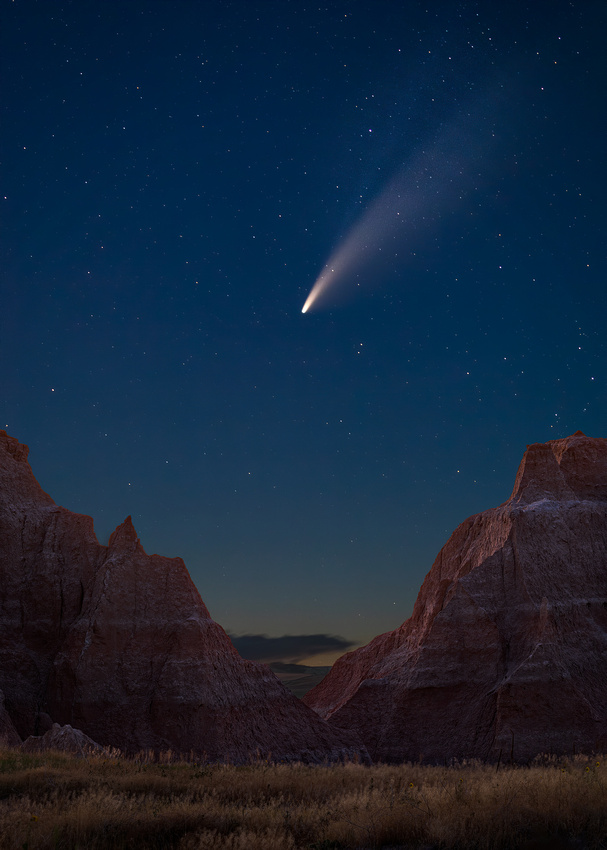Comet NEOWISE
Comets are ancient. They are leftovers from the primordial material that formed the solar system about 4.6 billion years ago. Composed of ice, rock and dust, they are often referred to as “dirty snowballs.”
Comets come from one of two places: the Kuiper Belt or the Oort Cloud. Comets with orbits of less than 200 years come from the Kuiper Belt. The Belt is a collection of these cosmic relics located about 2.8 to 4.6 billion miles from the sun.
The Oort Cloud is the home to comets with orbits of greater than 200 years. The Oort Cloud stretches from about 186 billion to 18.6 trillion miles from the sun.
Every so often, a gravitational interaction knocks one of these cosmic relics towards the sun. As it slips closer to the sun it warms up and gases sublimate (going directly from solid to a gas) from the ice. Dust is often pulled away as well creating the sweeping trail seen in most comet images. Comets also have an ion tail made up of ionized gas blown back by the solar wind.
Comet NEOWISE
If you discover it, you get to name it. NASA space telescope NEOWISE first spotted the comet on March 27, 2020. It’s a visitor from the Oort Cloud. NEOWISE is one of the few comets visible to the unaided eye. It’s the brightest comet since Hale-Bopp in 1997.
NEOWISE is estimated to be three miles in diameter. It’s covered with dark sooty material. There’s enough water in the ice to fill about 13 million Olympic swimming pools.
The comet survived a very close approach to the Sun inside Mercury’s orbit on July 3, 2020. The very close passage is cooking the comet's outermost layers. Gas and dust are erupting off the icy surface and creating a bright, large tail of debris visible to the naked eye. It’s now racing back to the Oort Cloud.
Sky watchers in the Northern Hemisphere can spot the object after sunset, to the northwest just under the Big Dipper constellation. A simple telescope or pair of binoculars can reveal more details.
Watch it now
NEOWISE won't be back in our neighborhood for another 6,800 years, so get out now to observe this remarkable sight. It should be visible until the end of July.
I took a socially isolated trip to Badlands National Park last week. One of the highlights was photographing NEOWISE on July 15. The Badlands are dark sky territory with minimal light pollution. Comet NEOWISE was easily visible to the naked eye.
On that evening, it was 71 million miles away moving at 144,000 miles per hour. The coma (“fuzzy” ball) was 37,000 miles in diameter.
I could only find one spot in the park with a view to the Northwest with any sort of Badlands foreground. After taking a few photographs, I settled in to simply enjoy the view.
Thanks for looking,
Chuck Derus

